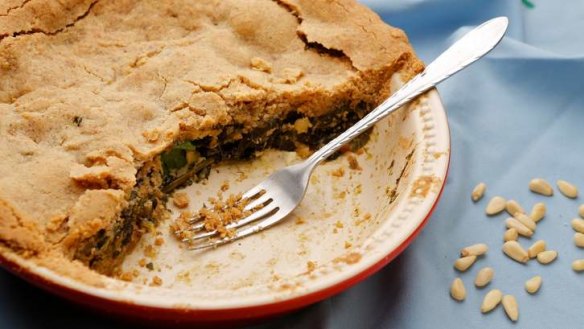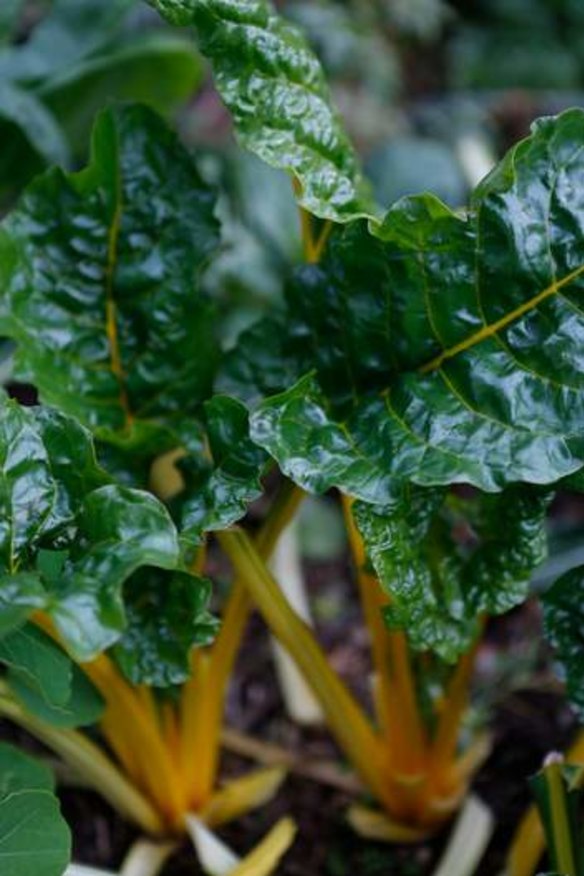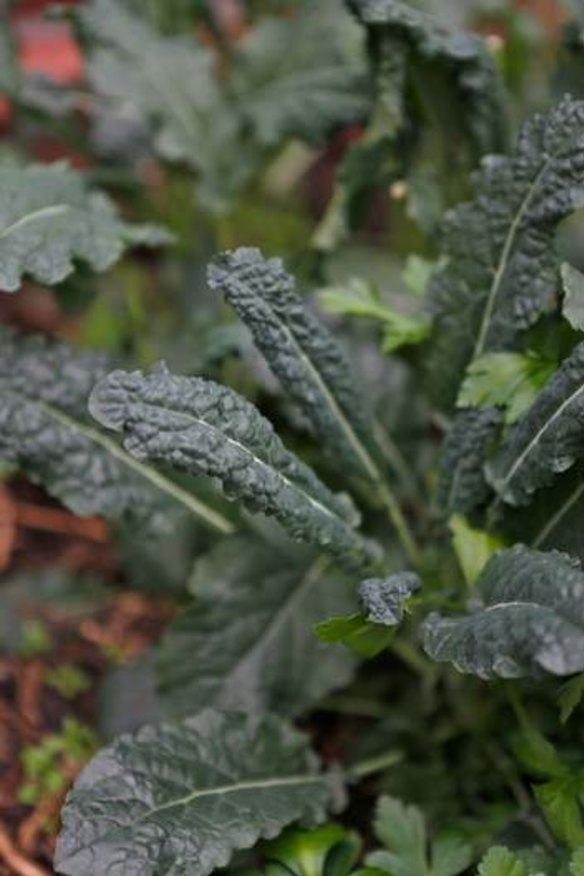Go green this winter
Kale, silverbeet and other leafy greens are a great way to boost your vitamin C levels in the cooler months.

The loveliest aspect of winter gardening is the generous offering of winter greens that spring up in the vegetable patch. It's an entourage of chlorophyll-rich colour in an otherwise barren, muddy landscape that might otherwise be disheartening for the avid and enthusiastic grower.
If you venture past the surrounds of your garden bed, there is also an abundance of sprouting wild greens growing wild in public areas or lovelorn corners of the backyard at this time of year.
Leafy green winter vegetables are an excellent source of fibre, are rich in the plant compound chlorophyll, and provide a rare source of vitamin C in winter time.
But more importantly, they are the basis of dishes unique to this time of year – soups, winter stir fries and humble, pastry-laden pies – that provide warmth and nourishment while the days are short.
In the garden, winter greens are the hardy, fibrous, colourful leafy vegetables that provide nutrition and flavour to winter dishes. They are the brassicas – cabbage, brussel sprouts, kale, cauliflower and broccoli; the chenopods – chard, spinach and beetroots; the raw greens – rocket, mizuna and dark coloured lettuces, and the wild and woolly weed varieties such as nettle, mallow, cleavers and chickweeds.
If you have a vegetable patch, you will no doubt be reaping the benefits of bright, bold five-colour silverbeet, as well as kale, beetroot and mizuna which, thanks to the recent cold snap should be bursting with colour and flavour.
For us, kale has been springing up relentlessly out the front of our vegie patch. We have had no choice but to enjoy kale chips, creamy kale pasta sauces, kale soups and a humble wild greens pie.
For us, kale has been springing up relentlessly out the front of our vegie patch. We have had no choice but to enjoy kale chips, creamy kale pasta sauces, kale soups and a humble wild greens pie with an assortment of every green possible from the garden and neighbourhood.
The thing I love about growing winter greens is that they just grow and re-grow when you pick them – despite a relative lack of attention during this otherwise non-outdoorsy time of year. With a minimal amount of TLC, they thrive on the winter climate, moist air and small intervals of sunshine during the winter months.
If you haven't already planted your garden, it's not too late to add a few seedlings and enjoy the remnants of their harvest before spring. The key is to choose a sunny spot for them, and fertilise the soil well before planting with plentiful compost or worm castings.

I have noticed more than a few foraging cooks with hessian bag, scissors and gloves wandering pockets around Melbourne. Of course, in public areas you should ask before you pick, and most people will give you a firm heads up or heads down.
I couldn't help myself last Saturday. At the Collingwood Children's Farm I came across an abundance of free-growing stinging nettles. Without scissors or gloves on hand, I had to get by with a pocket handkerchief and handbag to (somewhat painfully) harvest them for a nettle soup.
Nettles and wild greens seem to relish this chilly weather. In soil that is moist with plentiful compost, they spring up, bright green and teeming with minerals and chlorophyll.

Kale
The most familiar varieties include curly kale – a dark colour green-leafy vegetable with round, curly tips – and tuscan kale which also goes by the name of cavolo nero (translating to black cabbage).
Kale is the most primitive of the brassicas and was the most widely used until "headed" cabbages were bred in Germany in the 1100s.
It is very easy to grow and can be bought as seedlings from most nurseries or propagated as seeds during autumn. If you haven't already planted it this winter, you should do it now – yes now!
Silverbeet, also known as swiss chard or seakale beet.
This is the most beautiful addition to any winter garden. If you are able to source the five-colour varieties, the stems are bright fluorescent colours of deep pink, orange, yellow and red. It is very easy to grow and, if well tended, will last several years in the same spot.
Silverbeet is the ultimate "poor man's vegetable" as its bounty is generous, its uses are many and it will survive most environments.
We had several sprout in our driveway during a renovation after I dropped some seeds there accidentally. The plants grew almost a metre tall and continued to produce big, bushy leaves, despite lack of attention.
Silverbeet is extremely versatile. The leaves and stems can be cooked but thicker stems require slightly longer cooking. So it is a good idea to separate them and cook them first, before adding the leaves.
It's delicious in soups and stews. The French enjoy it with a creamy bechamel sauce and its Moorish origins lend it to dishes with an oily, buttery base, topped with pine nuts and raisins.
Silverbeet is easily grown from seed and tiny seedlings in tin pots make wonderful gifts. However, if quickness and convenience are more to your liking, it is sold in abundance at most nurseries, so there's no excuse not to pop some in your garden in the coming months.
Stinging nettles
These hardy little weeds pop up in moist, nutrient-dense soils in the cooler parts of Australia. They are considered a "wonder weed", full of minerals, fibre and chlorophyll.
Herbalist Juliet de Bairacli Levy once said: "No other green vegetable excels the nettle in mineral and vitamin content". And for this reason, it has been revered in traditional herbal medicine textbooks for its healing properties.
Of course, it does sting when you pick it; gloves, scissors and a hessian sack are essential. Its leaves and stems are covered in small, stinging hairs that cause a painful bite or mild rash.
The nettle grows in moist, well-nourished soil and provides important nutrients to surrounding landscapes. It features prominently in biodynamic gardening books as a plant fertiliser and an indicator of nutrient levels in the soil.
Once picked, nettles can be cooked just like spinach – add them to soups, quiches or omelets. They are an excellent addition to meat and vegetable stocks as a mineral source.
Nettle is not usually sold in nurseries because of its weed status but it can be propagated if you source it wild with seeds on it. Take it home and give it a good shake in your garden where the soil is moist and well composted. You should get a few plants pop up in the months that follow.
This pie uses the best of winter greens that are easy to grow at home, as well as a few optional wild varieties, if you are able to obtain them. I use a small, ceramic pie dish 22cm in diameter and 5cm deep.
Filling:
2 cups silverbeet, kale or stinging nettle, cut into rough 2.5cm pieces, lightly cooked in a steamer and allowed to dry.
90g fetta cheese, crumbled
1/2 cup pine nuts
1/4 cup currants
dash olive oil
Pastry:
1 cup nut flour (use ground nuts such as hazelnut, almond and pecan. You can buy them whole, then grind them to a flour with a food processor.
1/4 cup rice flour
1 egg yolk
juice 1/2 lemon
pinch sea salt
80g butter
Method:
1. Start by making the pastry: blend together all ingredients in a food processor until smooth. Check for additional salt.
2. Roll out 60cm of baking paper, fold it in half and place the pastry in the middle of both sheets (like a sandwich). Refrigerate until firm.
3. Make the filling by combining all ingredients. Toss well with your hands, add a generous dash of olive oil and season to taste.
4. Rub the bottom of your pie dish with olive oil then pour in the filling.
5. Remove the pastry from the fridge. Keep the baking paper folded in half and roll out the pastry between the sheets of paper using a rolling pin. It should be about 0.5cm thick. Remove the paper from one side of the pastry, then place the pastry on top of the pie. Pull off the paper on the other side and ensure the pastry sits evenly flat atop the filling. Trim the edges around the top.
6. Place pie in a pre-heated oven at 180C and cook for 20 minutes or until lightly brown and crisp on top.
The best recipes from Australia's leading chefs straight to your inbox.
Sign up